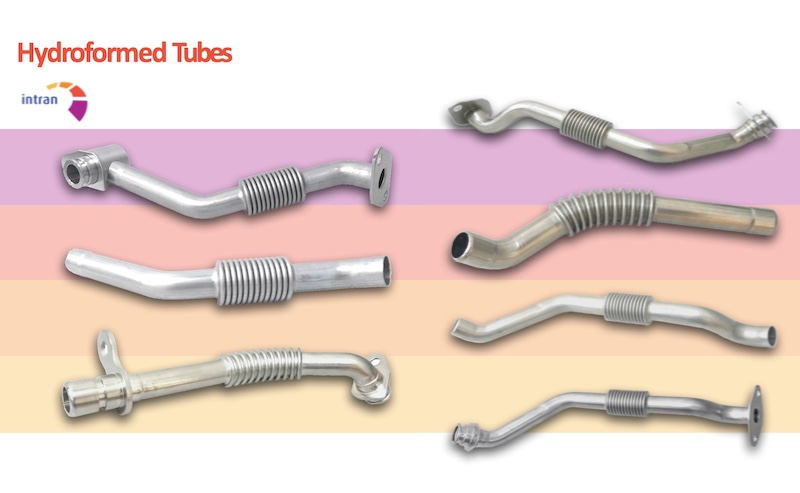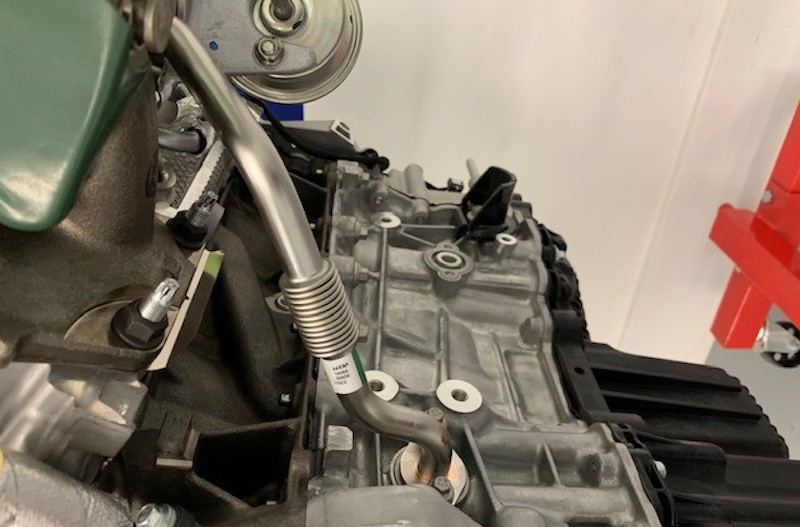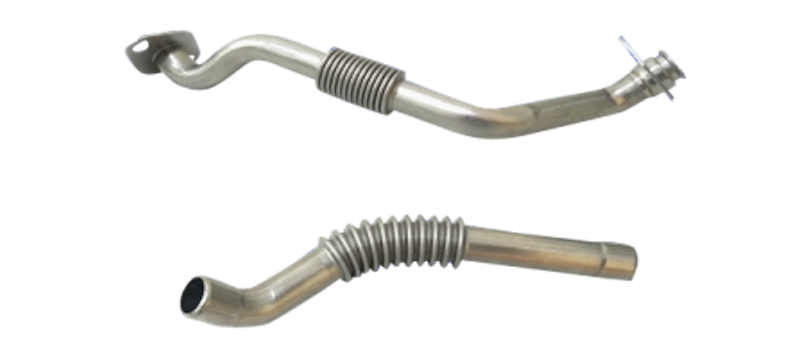How Hydroformed Bellows Work
Hydroformed bellows are an important component in many automotive parts. If you’ve ever wondered why bellows are necessary in some tubes, and how hydroformed bellows worked, you came to the right place.
What Are Hydroformed Bellows?

Some hydroformed tubes are designed and manufactured with bellows. A bellows is a flexible portion of a tube that resembles an accordion. When you think of the word bellows, you probably imagine the leather bellows used to blow the air out of the chimney. Modern bellows are high-tech products used in machinery, medical and industrial applications.
Hydroformed bellows exist to allow for the tube to slightly expand or flex to accommodate pressure, vibration, and/or thermal movements. It’s a useful design in many automotive applications.
Creating hydroformed bellows is a simple and straightforward process. A segment of the metal tube is forced by hydraulic pressure against a mold until the bellows are fully formed. Here’s an in-depth description of the tube hydroforming process with bellows.
Which Automotive Parts Need Hydroformed Bellows?

Metal bellows are widely used in pipe systems, the automotive industry, aerospace and microelectromechanical systems. Many different automotive piping systems need bellows. The most common examples are:
- Exhaust pipes
- Heat exchangers
How Hydroformed Bellows Handle The Pressure Inside The Tube
When there’s a lot of heat and/or pressure inside a tube, it expands. The presence of bellows allows for the expansion without damaging the pipe or any related parts. Tube manufacturers insert bellows expansion joints into the piping system to absorb the heat growth of the pipe. Over time, the pipe is heated and cooled and the bellows go through a complete cycle.
Why The Design And Structural Integrity Of The Bellows Matters A Lot

There are two types of metal bellows:
- Molded bellows
- Welded bellows
When molded bellows are created, a tube is shaped with a deep drawing technique. There are a variety of processes to choose from. The most popular processes include roll forming, rolling, expanding mandrel forming, elastomer forming, and hydroforming.
The welded bellows are called edge-welded membrane bellows. These can be produced by welding a number of membrane shapes together. Molded bellows have more structural integrity than welded bellows.
Hydroforming is one of the best methods to use when you want to create bellows in your tubes. Hydroforming doesn’t create any seams or vulnerable areas. That’s a big deal because the structural integrity of the bellows matters a lot.
When in use, the bellows will move and expand some. They also need to be able to withstand internal pressure and thermal movements. The manufacturer must determine the life cycle of a bellows expansion joint before deciding on:
- The thickness of the bellows
- The number of layers required
- The number of convolutions
For applications where there is little pressure and thermal movement, a single layer metal bellows is satisfactory. Multi-layer metal bellows may be a better choice when vibrations are present in the piping system. A multi-layer bellows can be the better choice for a longer cycle life, too.
Hydroforming bellows is a process that requires a lot of experience and expertise. The manufacturer has to create a convoluted element that’s both:
- Strong enough to withstand the internal pressure and thermal movements
- Responsive enough to flex and expand
If you want high quality hydroformed tubes with bellows, do your due diligence. A manufacturer that makes quality hydroformed bellows delivers much more value than one that doesn’t. You’ll get high quality hydroformed bellows with us.
At Intran, we offer hydroforming services for tubes with bellows. We specialize in automotive parts. Learn more about our tube hydroforming services today!
